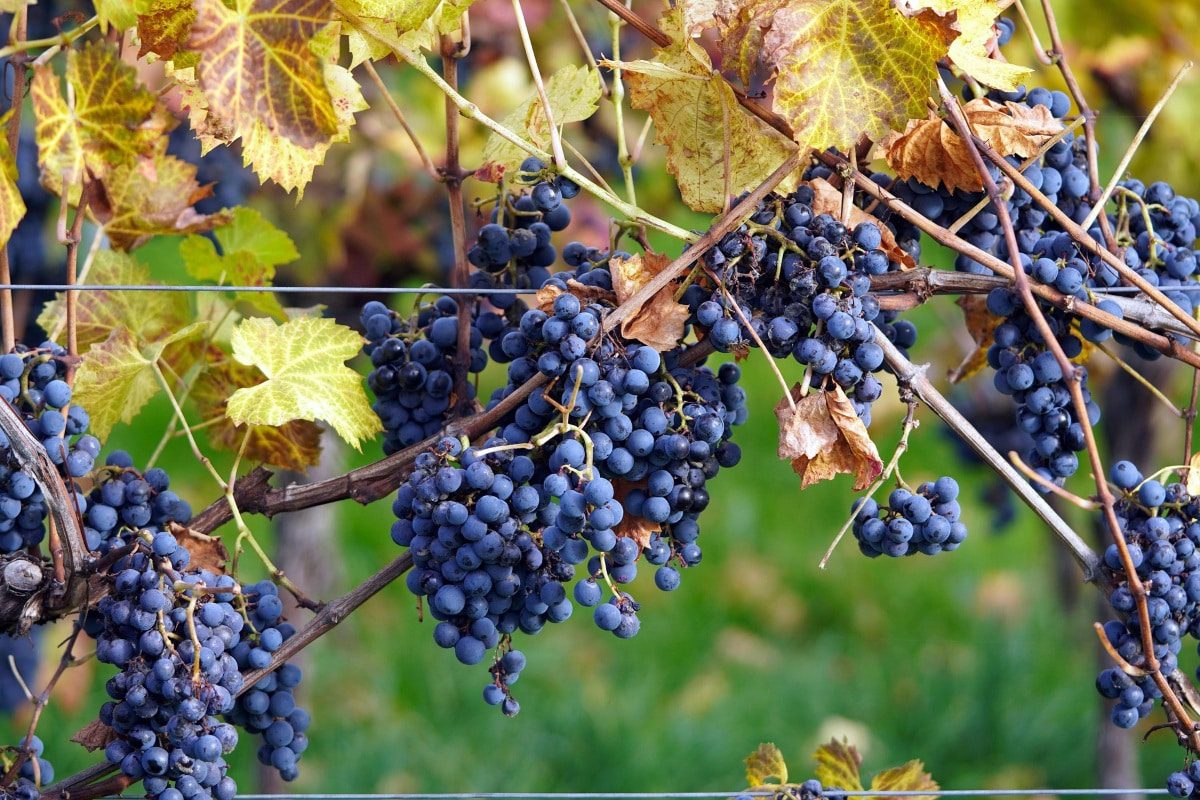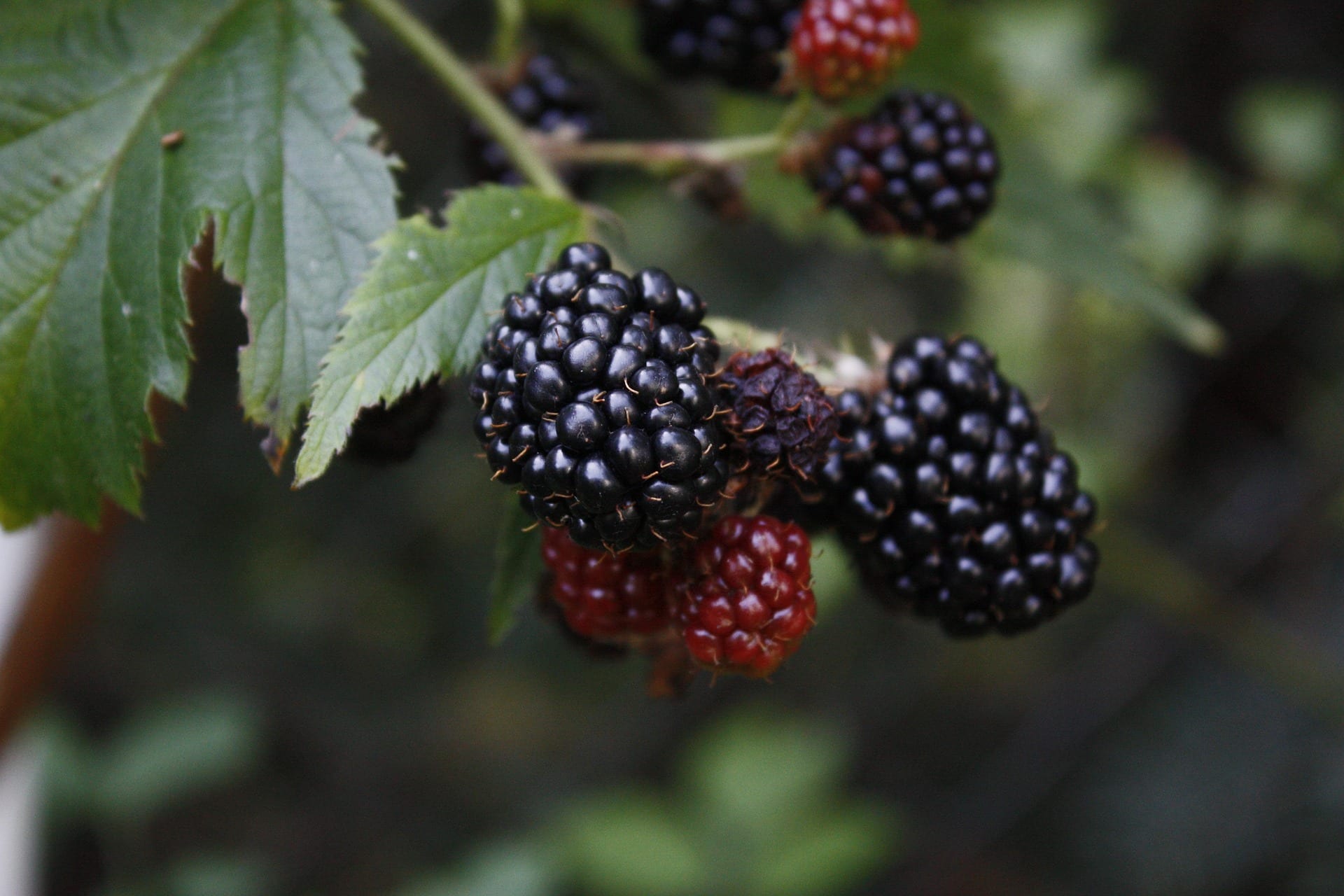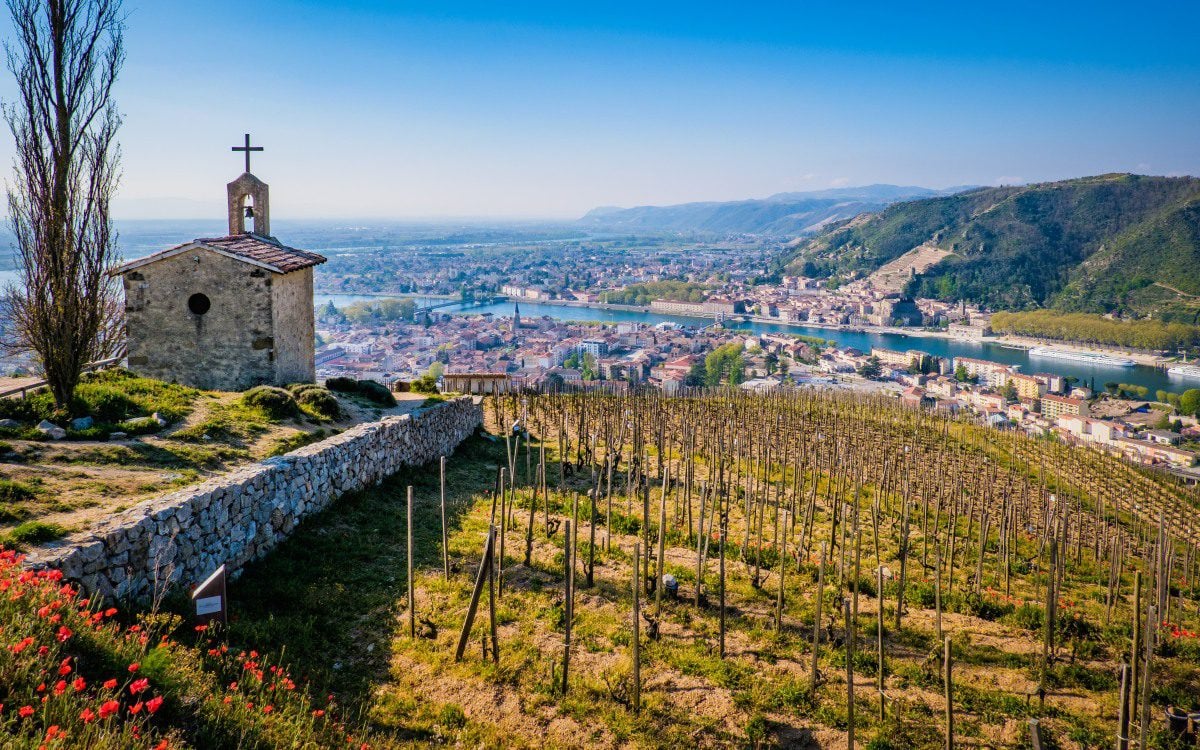Introduction to Hermitage
Hermitage bounds the lower side of the Northern Rhône, and is the most reputed and historical site in this land of Syrah. As the river winds down from Lyon, it takes a sharp bend westward, perfectly exposing a south facing hillside that produces ethereal red and white wines.
While only 136 hectares (Lafite Rothschild alone is 100), there is an immense variety of style here. Chapoutier is the largest landholder behind the Cooperative, and produces single vineyard bottles for both his reds and whites. Jaboulet on the other hand, prefers to do a blend from the various sites to best demonstrate the terroir.
Unlike its pock marked and crevice heavy neighbor Côte-Rôtie, the hills of Hermitage are relatively smooth, with different vineyards being marked by soil and elevation differences. The elevation differences are notable, the top of La Chapelle rises steeply right from the edge of town.
The history dates back to the times of the crusades, when a knight returning requested to settle along the river, and tended a small patch of vines near the chapel that still sits (rebuilt) at the top of the hill. Thomas Jefferson, despite being a Bordeaux fan, purchased 550 bottles upon his visit as ambassador to France. The wines also made it as far as Tsar Nicholas’s court in Russia.
For much of the 19th century Hermitage prices were comparable to Chambertins and Romanees from Burgundy as well as the top Bordeaux chateau. While that gap has widened in recent years, the best examples are still released starting at several hundred dollars.

Hermitage Notable Crus
Les Bressards
If there was one cru that represented Hermitage alone, it would be the granite rich soil of Les Bressards. Wine makers regularly point to this as the soul, structure, and skeleton of their wine.
Le Meal
Lower down and further east of Bressards is le Meal, which produces a richer and darker red, which complements well in blends. The limestone and flint here also make it quite attractive for whites.
Gréffieux
Further on down the easterly road we find Les Greffieux, which while less likely to stand alone as the other two, produces interesting parcels to blend from its clay and alluvial soils. This part of the hill has noticeably flattened out and isn’t as well exposed as the other sites. We see more fruit and approachability here.

Hermitage Tasting Notes
Growers who choose to highlight their single vineyards (a charge led by Chapoutier, but followed in a more modern style by Ferraton and Delas) see much more variation across both years and parcels. Be careful of the halo effect this produces, as lesser parcels don’t have the individual complexity of top lieux dites.
Producers like Jaboulet or Chave choose to blend and create a harmonious cuvee each year the way the Bordelais look at balance.
While white Marsanne is allowed up to 15%, it’s almost never used, unlike Côte-Rôtie who leans on Viognier with some frequency.
These wines require exceptionally long aging to break down the tannins, but will ultimately unfold into a rich tapenade, with berry fruits, oregano and thyme. A long decanting period is also well recommended, as this will bring out tertiary notes of game and forest floor from the older examples.
For white hermitage, both Roussane and Marsanne grapes are allowed, though the bias is towards Marsanne. When young they are rich and unctuous; ripe with apricot and honey suckle, which ages into hazelnuts and effervescence.

